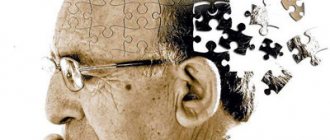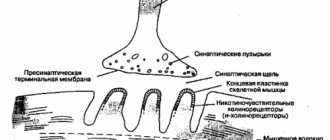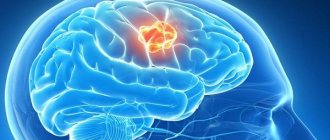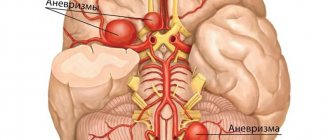Principles of treatment of schizophrenia
Psychotherapeutic procedures are recommended in combination with drug treatment for mental disorders
Schizophrenia is a complex and incurable disease. Modern medicine cannot offer a truly effective treatment for schizophrenia, so drug therapy plays a leading role. However, the drugs do not solve the problem once and for all, but only relieve acute symptoms, giving the patient some semblance of mental clarity.
Modern drugs for schizophrenia are effective in the early stages of the disease. In this case, there really is a chance of achieving sustainable remission for many years, or even for life. There are cases where a patient has had only one attack in his entire life, which was successfully stopped with drugs.
However, in the vast majority of cases, the prognosis is much more pessimistic. Even after the productive symptoms of the disease have been relieved, the patient is unable to live a full life and is forced to choose social isolation. The issue of social maladjustment is especially acute among male patients. This is due to the relatively low effectiveness of medications compared to treatment for women, and the longer recovery of the nervous system. In addition, an obstacle to returning to society may be the inability to accept your diagnosis and the disease with which you have to learn to live. Psychotherapy for schizophrenia helps solve this problem.
It should be noted right away that psychotherapy is not the main method of treatment. With an exacerbation of the disease and the development of productive symptoms (delusions, hallucinations, acute psychosis), the patient is admitted to an inpatient psychiatric clinic for drug treatment. After the symptoms have subsided, the patient remains under the supervision of medical personnel for some time - this is necessary in order to promptly recognize the onset of a new exacerbation, which can occur if the medications are insufficiently effective. Then the question of further therapy is decided. If the patient demonstrates full sanity and is ready to return to society, he is simply discharged and prescribed long-term prophylactic doses of medications. In cases where the patient has problems returning to society or negative symptoms of schizophrenia remain (depression, flattened affect, etc.), psychotherapy is prescribed.
Psychotherapy may be indicated for prevention in patients with long-term remission who are constantly taking medications.
Psychotherapy is widely used in the treatment of childhood schizophrenia, since only psychotherapists can truly effectively interact with the child, helping him cope with his illness.
Vitamin therapy
They tried to treat schizophrenia with high doses of vitamins, for example, C or B vitamins, but the effectiveness of such therapy remained low.
For example, at one time the treatment of sluggish schizophrenia with riboflavin in combination with ascorbic acid and reduced iron was proposed by M.P. Bazarova and M.Ya. Sereisky (1954). Such therapy, according to the authors, contributed to an increase in the activity of neuroglia, which, in turn, affects metabolic and reduction (oxidation) processes in the central nervous system.
Psychotherapy methods
Schizophrenia is a complex and multifaceted disease, so there is no universal method of treating the disease. The psychotherapy plan for schizophrenia is drawn up on an individual basis and depends on the characteristics of the course of the disease. Mandatory conditions for prescribing psychotherapy:
- relief of exacerbation with drugs;
- the patient must contact the doctor;
- the patient should not pose a danger to others.
Most often, psychotherapy is used for the recurrent form of the disease during the period of remission. Also, this method of therapy is effective for simple schizophrenia without productive symptoms and residual (residual) schizophrenia. It is in cases of residual schizophrenia that the method is most effective.
Cognitive behavioral therapy
Therapy helps cope with panic attacks
Initially, this method of psychotherapeutic treatment was developed to independently overcome subconscious attitudes that prevent you from living a full life. In modern psychotherapy, it is widely used to overcome phobias, obsessive states and overvalued ideas.
The essence of the method is to change the patient's perception. The doctor helps the patient change his point of view on things that cause him fear or anxiety, and also teaches how to overcome seemingly uncontrollable emotions in phobias.
In schizophrenia, this method helps to get rid of the following conditions:
- systematic delirium (with a mild paranoid form of the disease);
- super valuable ideas;
- the need for compulsive repetition of the same actions;
- uncontrollable feeling of panic;
- anxiety and manic syndrome.
The main goal of the method is to help the patient form a critical assessment of his own delusional ideas. This is effective in mild forms of delusions, for example, in paranoid schizophrenia, and also allows you to cope with the consequences of acute delusions in the paranoid form of the disease, the exacerbation of which has been successfully eliminated with drugs.
The second goal of cognitive behavioral therapy is to help the patient understand and accept his illness. The doctor delicately forms in the patient the idea of the need for treatment and compliance with all the recommendations of the psychiatrist.
At the same time, the specialist helps the patient take control of his emotions. As is known, patients with schizophrenia react very sharply in any stressful situations, so the psychotherapist helps the patient learn to cope with stress and emotional tension.
All this allows the patient to return to society and live life to the fullest. For family people, cognitive behavioral psychotherapy is a way to harmonize relationships with family and friends.
Psychoanalysis for schizophrenia
Psychoanalysis is not a separate treatment method. This is a collective concept based on the works of S. Freud and C. Jung. The method is based on working with the patient’s own subconscious. The purpose of this therapy is:
- patient acceptance of his condition;
- learning to find triggers that can provoke an exacerbation;
- working through delusions and hallucinations;
- learning the ability to distinguish productive symptoms of schizophrenia from reality;
- normalization of interaction with society.
The method is based on individual conversations with the patient. In general, the session is structured according to the following scheme: over the course of several weeks, the doctor asks questions to which the patient must answer honestly. Then the doctor forms his own assessment of the patient’s personality and helps him learn to interact with the subconscious.
Controlling one’s own unconscious is the key to prolonging remission, as the patient learns to analyze potential dangers and avoid situations that act as a potential trigger for the onset of a new exacerbation.
Therapy focused on overcoming the stigma of schizophrenia
The technique helps many patients, over time, return to a normal, fulfilling life.
The main problem of social adaptation of patients with schizophrenia is the attitude of society towards people with such a diagnosis. Moreover, patients themselves are also susceptible to negative attitudes towards people with schizophrenia, which forces them to consciously choose isolation, knowing that they will not find support in society. The media are largely to blame here, with the help of which the word “schizophrenic” acquired a slightly different meaning, and is now associated by the overwhelming majority of the population with madmen and aggressors potentially dangerous to society.
An important part of psychotherapy is overcoming such stigma. The patient must realize that he is unhealthy, but at the same time he must understand that the diagnosis of schizophrenia does not put an end to him as an individual and a member of society.
This method of treatment is extremely important for patients who have achieved stable remission, since with the right approach and highly qualified doctor it helps to establish social interactions. Some people even manage to return to work and family.
Personal psychotherapy
This technique is aimed at strengthening the patient’s own “I” and personality. It helps restore cognitive functions of the brain, increase attention, improve memory and concentration. During sessions, the doctor helps the patient with the development of speech and facial expressions, helps to overcome negative emotions, helping to recognize super ideas and delusional symptoms.
This type of psychotherapy helps the patient come to terms with himself, which has a very positive effect on further treatment, since patients stop refusing to take recommended medications, realize their diagnosis and turn to a specialist themselves, noticing alarm bells.
Existential therapy
This method is quite controversial and requires a highly qualified doctor. The bottom line is that the psychotherapist gradually leads the patient to the point that he himself is aware of the specifics of his mental state, and gradually begins to work on it.
However, the method requires the doctor to immerse himself in the “world” of the patient, which can be dangerous for the psychotherapist himself. In addition, it can be difficult to work with people with schizophrenia, since their way of thinking often defies logical predictions, as a result, psychotherapy can only do harm.
In simple terms, this type of treatment helps the patient understand the meaning of delusions and hallucinations, find cause-and-effect relationships and form critical thinking regarding their own behavior.
Problem-oriented method of psychotherapy
The problem-oriented method is one of the most effective areas when working with people who have mental disorders
This method is the most common and effective. Moreover, this treatment method is approved by psychiatrists around the world. It consists of several stages - working with the patient, working with the patient’s family, integrating the patient into society.
The method is aimed at a detailed analysis of the problem and search for the optimal solution. It allows the patient not only to organically integrate into society, but also to establish relationships with family and friends, while overcoming the character traits that appear in schizophrenia.
Types of psychotherapy
Treatment with psychotherapy for schizophrenia requires quite a lot of time - this must be taken into account by patients and their families. Before going to the first session, you should be absolutely sure that the patient’s general mental state allows him to accept such therapy, otherwise the doctor simply will not be able to reach the patient.
There are two main types of psychotherapy – individual and group. Each has a number of features.
Individual psychotherapy
Individual sessions are the beginning of psychotherapeutic treatment. The fact is that at first it is difficult for the patient to get in touch with the doctor, not to mention attending group sessions.
Individual psychotherapy helps you understand your illness, learn to cope with negative symptoms and critically evaluate your own actions. This is the key to the success of the patient’s upcoming integration into society.
The exact type of work with the patient in individual sessions is chosen by the doctor after studying the medical history and an initial conversation with the patient.
Group sessions
Group psychotherapy requires preparation. The patient is admitted to it only after a detailed study of existing problems in individual sessions. In general, group psychotherapy is the last preparatory stage before the patient returns to society, and therefore is very important.
In these sessions, patients interact with other people with the same diagnosis and, together with the doctor, discuss various topics that directly affect the life of a person with schizophrenia. Often, group therapy is aimed at jointly overcoming the stigma of schizophrenia. As a rule, such classes should be attended for a long time, sometimes for years.
Hypnosis
A procedure performed by an unqualified doctor can only cause harm.
Hypnotherapy is the most controversial treatment for schizophrenia. In some cases, hypnosis can even be dangerous, as it affects the unconscious of a person with an unstable psyche and unpredictable reactions. In addition, there are quite a few hypnotherapists; often services for treating schizophrenia with hypnosis are offered by charlatans. In this regard, it is not recommended to resort to this method. It is better to prefer classical methods of psychotherapy.
Pyrotherapy
At one time, the use of pyrotherapy was recommended for the treatment of resistant variants of schizophrenia and the presence of psychopathic symptoms. T.A. Nevzorov and L.G. Ursova (1972) in resistant cases of sluggish schizophrenia advised adding pyrotherapy to psychopharmacological agents. The effectiveness of adding pyrogenal and sulfozine to neuroleptics, especially in the treatment of obsessive states, was justified by a change in the level of reactivity of the patient’s body under the influence of drugs that increase temperature.
Forecast
Patients and their loved ones are interested in whether schizophrenia can be cured with psychotherapy. In fact, schizophrenia is an incurable disease, and today there is not a single effective method that would give a chance for a full recovery. As practice shows, psychotherapy helps the patient learn to live with psychopathology, teaches him to recognize the initial symptoms of exacerbation, which allows patients to voluntarily consult a psychiatrist if alarming signs appear. The result is timely drug correction, which entails prolongation of remission. In addition, psychotherapy teaches the patient to control his emotions and significantly reduces the risk of suicide among patients with this diagnosis.
There are cases where a combination of psychotherapy and drug treatment led to stable remission for many years and helped the patient return to a normal, fulfilling life without regard to the time spent in a psychoneurological dispensary.
Related Articles
EEG for schizophrenia: can a diagnosis be made based on the examination results?
Diagnosis of schizophrenia: list of modern research methods
Disability for schizophrenia: how to get it?
What is reactive depression: features of symptoms and treatment
Fear of sex: what is it called, symptoms, methods of dealing with the disorder
Mosaic schizophrenia: clinical signs and treatment methods
Somatic therapy
Serious scientific developments in biological therapy for schizophrenia appeared after the First World War. To a greater extent, they relied on the hypothesis of a mysterious somatic illness as the primary source of schizophrenia. This hypothesis was formulated based on the results of the treatment of malaria by Wagner-Jauregg, Nobel Prize winner in 1927.
It was assumed that the therapeutic effect in the treatment of mental disorders occurs as a result of an attack of fever or can be caused by an artificial coma or convulsive state.











